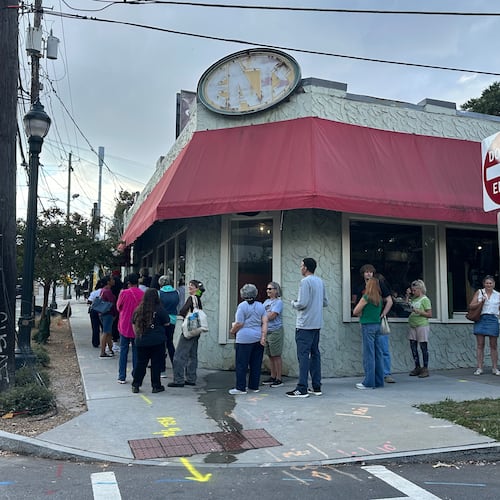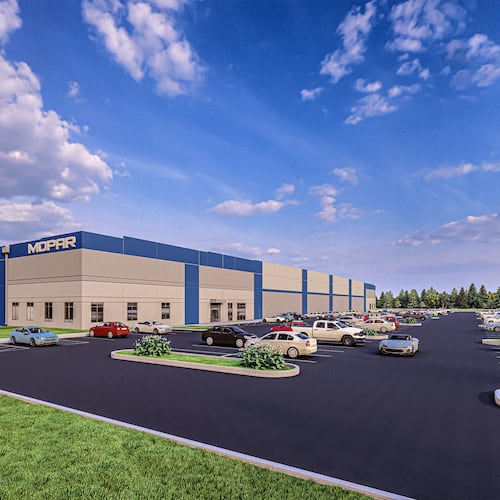When the housing market was white-hot, McCar Homes was one of the nation’s leading builders.
In 2006, the Alpharetta-based company built and sold more than 2,200 homes and boasted revenues upward of $500 million. But now that the market temperature is in the Arctic region, McCar’s chief executive isn’t sure the company will make it into 2010.
Like McCar, many Atlanta area home builders are uncertain about the future. Those who are still in business — a number that gets smaller by the month, industry insiders say — are trying to find a way to survive the ice age that has become the housing market. It is hard to track the number of home builders who have failed because of the different ways that a builder can go out of business, industry experts say. Many known instances are anecdotal.
“We are trying to meet our financial obligations as best we can under the circumstances,” said Steve Roberts, CEO of McCar Homes. “This is just a difficult time for the company and the industry as a whole.”
Before times got tough, things were going relatively well for McCar, formerly MDC Homes. The company, started by Dan and Elaine McSwain in Vidalia, moved to Atlanta in 1985 and began building homes outside the Perimeter.
After establishing a solid base in the Atlanta area, the company spread its wings to the Carolinas in 2000. A few years later, McCar-built homes were popping up in Tampa, too.
By 2005, McCar Homes was a regular among the top 100 builders in the country, according to industry reports put out by Reed Construction Media. With more than $400 million in total new residential construction revenue, McCar built and closed nearly 1,900 homes that year, the Reed report said. And 2006 was even better, but that level of success would not carry over into 2007.
Rob Myers, owner of Atlanta-based Colonnade Properties, had similar successes on a smaller scale. In 2006, his company built more homes valued at $1 million and above than it ever had.
“That year, we built 12 custom homes, and it was a good year,” he said. “We just didn’t know it wouldn’t last.”
In a normal year, approximately 40 percent of Myers’ business would be building homes before buyers are lined up, 50 percent would be custom orders and 10 percent would be renovation, repairs or remodeling, he said.
“If we did any repairs, renovation or remodeling back then, it was almost a favor,” he said. “But around this time last year, I decided it was time to seek out that type of business.”
In the past 12 months, he has completed two homes. And with no other jobs on the horizon, Myers said if he couldn’t turn his home building business into a remodeling and repair venture, he would not survive.
Myers said he was fortunate his business was a small one and was flexible enough to change directions. It is harder for companies the size of McCar, and larger, to pull off such a switch, he said.
“You can put builders in three general categories: the big public builder, the small business builder and companies in the middle, like McCar,” he said. “The guys in the middle and the bigger ones, when the market stops on companies like that, it’s like trying to stop a train.”
After more than 30 years in the business, John Wieland, chief executive of John Wieland Homes and Neighborhoods Inc., said many of his friends didn’t survive the most recent decline.
“Nearly everybody is out of business,” he said. “We are more risk-averse, and that’s how we made it through. But there were things we could have done differently, too.”
Housing is cyclical, and it had been 15 years since Atlanta had seen any significant downturn, said David Ellis, executive vice president of the Greater Atlanta Home Builders Association. He said before the hard times, there had been talk of a possible downturn in “bubble markets” like Phoenix, Las Vegas and Los Angeles.
“Atlanta was never really in the middle of those discussions,” he said. “But the slowdown and moderation in job growth, a normally healthy part of Atlanta’s economy, caught people by surprise. And the housing market, I think, followed it down.”
The spring of 2006 was the first time McCar officials realized there could be a problem, Roberts said. Online traffic, contracts and sales trends were “out of whack,” he said. The usually predictable ebb and flow of home sales was anything but. The company began making some adjustments, but nothing too dramatic.
“It is very difficult to de-scale an operation, any operation, especially when you’re entrenched in multiple markets,” he said. “You can’t dramatically stop without impairing your asset base to a greater extent. There are certain fixed costs that you just can’t get out of, that if you don’t keep building at some pace, everything comes undone.”
Initially, McCar planned for a 10 percent to 20 percent decline in the business, but that was not enough, Roberts said. “By 2007, it was another 10 [percent] to 20 percent and another 10 [percent] to 20 percent.”
But residential construction statistics show there was still a lot of activity in the market in 2007 and 2008. Banks were still lending, and many builders felt “we could build our way out of it,” Roberts said.
McCar was still building, too, though it had reduced the number of homes it built to about 1,900 by 2007. By 2008, that number was closer to 1,300.
“Our objective in 2007 and 2008 was to try and shed some assets and pay our debt down voluntarily as much as we could in an orderly fashion,” he said. “I don’t think anybody realized how severe the downturn would be. It’s much greater than any other downturn that has occurred in our industry.”
Although many builders worked on the assumption the downturn would level out around 20 percent, the actual decline was nearly four times that, which sank a lot of builders no matter their size.
“I know a number of people who have stopped the business altogether, left the state looking for work and those who retired, but much earlier than they planned,” Myers said. “None of us thought it would be this bad.”
Myers said in his 24 years in business, he’d seen a downturn before, in the ’90s, but it wasn’t nearly as dramatic.
“In 1991 and 1992, things did slow down quite a bit, and builders had to find alternative sources of revenue,” he said. “But back then, we did a lot of work finishing homes on behalf of others. I also worked with a developer with a community in Norcross, and from there I got some pre-sales, so I was still building actually. But not this time.”
Roberts said McCar did its best to get out in front of the recent decline, but was ultimately unable to do so.
“Everybody, I think, was reactive, not proactive,” he said. “We thought we were proactive, but as things continued to deteriorate, it turns out we were mostly reactive.” Right now, McCar is doing its best to service the homeowners it can, which isn’t everybody, Roberts said.
“Satisfying homeowner needs have been difficult,” he said. “We have many more homeowners than our financial situation and cash flow will allow us to take care of, but we try.”
For homes closed since August, the company has contracted with a third-party new home warranty company so owners won’t be without coverage.
Recently it was announced that a number of the homes and subdivisions not completed by McCar would be picked up by Atlanta-based Beazer Homes. Hearthstone, a Los Angeles-based residential real estate investor, tapped the larger local company to finish a handful of projects, said Mark Proath, president of the California investment company.
“McCar worked very hard with us for a long time,” he said. “Unfortunately, they weren’t able to go forward with us.”
As for McCar, the company is down to fewer than 40 employees, from 500 at its peak, with approximately 70 homes under construction. Roberts said by the end of the year, the company may have built and closed 400 homes, if it’s lucky.
“It really is a day-to-day business right now,” he said, “and we’re doing the best we can.”
About the Author
Keep Reading
The Latest
Featured

